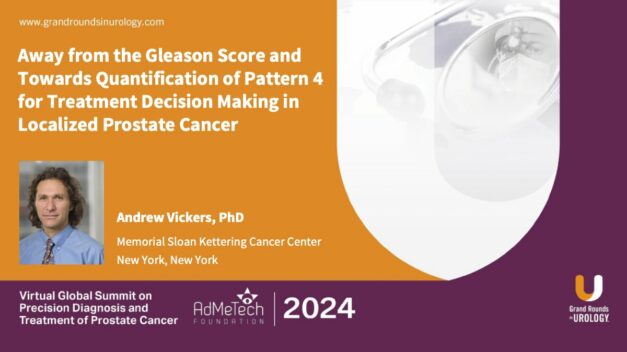Gleason Scoring Has Served Us Well for More than 50 Years, But It Is Time to Start Afresh
Andrew J. Vickers, PhD, discusses the weaknesses of Gleason scoring in diagnosing localized prostate cancer. Dr. Vickers begins by differentiating between Gleason “scoring” and Gleason “grading,” explaining that Gleason grading is robust, while scoring is not as robust. He emphasizes that Gleason Grade Groups 2 through 4 depend on the ratios of tissue with various Gleason scores, which he asserts make little sense.
Dr. Vickers offers clinical examples to support his assertion and explains that, with patients with Gleason Grade Group 2 disease, the total length of biopsied tissue with a Gleason score of 4 is strongly predictive of adverse surgical pathology risk. Dr. Vickers explains that in patients with Gleason Grade Group 2 disease, the amount of tissue with a Gleason score of 3 is not predictive. Dr. Vickers shares data out of France that indicate that the amount of Gleason score 4 or 5 tissue is more predictive of biochemical recurrence (BCR) and metastasis than total Gleason score.
Dr. Vickers asserts that there is a need for urologic oncologists to find a replacement for the Gleason score as the dominant influence on decision-making in localized prostate cancer. Dr. Vickers emphasizes the value of focusing on tumor size and tissue quality in disease assessment, as is done with other cancers.
Read More

